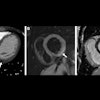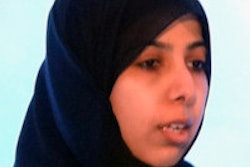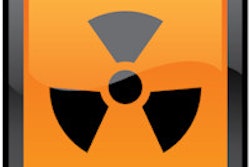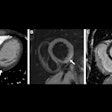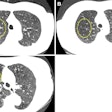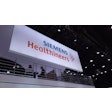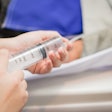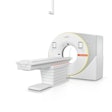Researchers in Thailand have published the country's first pediatric radiation dose survey based on data from three university hospitals. The group found that CT dose levels generally are reasonable for brain, chest, and abdominal exams.
Dose levels were nearly all less than the International Commission on Radiological Protection (ICRP) diagnostic reference levels in Europe, the study team reported. Data from the country's main tertiary care and referral hospitals can now be used to develop regional CT guidelines in Thailand (Acta Radiologica, September 1, 2012, Vol. 53:7, pp. 820-826).
The retrospective review of CT doses looked at dose records of patients younger than 15 years undergoing head, chest, and abdominal CT exams in three major university hospitals in the central, northern, and southern parts of Thailand, all with large pediatric patient volumes, the authors wrote.
The study team recorded CT dose index volume (CTDIvol) and dose-length product (DLP) for patients in four age groups: < 1 year; 1 to < 5 years; 5 to < 10 years; and 10 to < 15 years. The researchers compared range, mean, and third-quartile dose values with ICRP-recommended reference dose levels in Switzerland and the U.K.
The general indications for each CT scan were trauma for head CT, and tumor staging or surveillance for chest and abdominal CT, the authors wrote. They reported the number, gender, and mean age of the patients in each age group, as well as the CT scanning parameters.
CT radiation dose values by anatomical region
|
Head CT radiation dose values by reporting facility
|
|||||||||||||||||||||||||||||||||||||||||
| CTDIw = weighted CTDI. CTDIvol used in centers B and C; CTDIw used in center A. __/__ = CTDI in posterior fossa/CTDI in cerebrum. |
"If we compare the radiation dose of head, chest, and abdominal CT examinations between the three centers, we find that the values of CTDIvol and DLP in center B are less than from centers A and C, which are relatively similar, by nearly 50%," wrote Supika Kritsaneepaiboon and colleagues from Prince of Songkla University. "One of the reasons for this difference might be that center B used a dual-source CT scanner."
The authors found that centers A and B rarely used automated tube current modulation for chest and abdominal CT, while center C used the feature for most patients ages 1 year and younger. Its use helped reduce the radiation dose in chest CT more than in abdominal CT, and in larger patients more than in smaller patients.
The use of three university hospitals, which generally have the most competent staff, may not reflect routine pediatric dose levels throughout Thailand, and dose levels elsewhere likely are higher, the authors noted as a study limitation. A broader national dose survey is needed to determine the levels in smaller centers, they added. In addition, pitch, rotation time, and effective mAs were unavailable, and the retrospective study design also limited the scope of available information.
"Further studies are required, including more participating hospitals, in order to establish a national dose reference level and help to standardize pediatric CT protocols in Thailand," they concluded.
